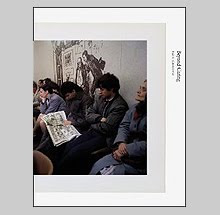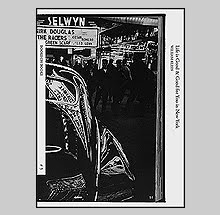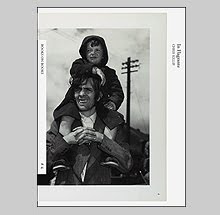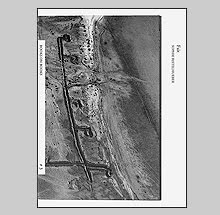Processo Grottesco and Yellowcake by Thomas Demand
One year ago this month, Thomas Demand exhibited his work Grotto at the Fondazione Giorgio Cini in
I enjoy Demand's work immensely probably much in the same way that I enjoy dioramas at the
That being said Grotto treads dangerously into territory that is what I have come to call the "Crewdson effect." The "Crewdson effect" is, as the productions get larger, their sheer enormity starts impeding on the viewers ability detach from the process and just experience the emotion or a meaning of the work. When I look at Gregory Crewdson's recent work I mostly see his process and scale, and my mind is swimming with thoughts like, "wow, he put tons of lights way back there in the background." So much so that I care little about anything else (which, since he has been essentially making the same image over and over again with the same meanings, I guess is OK). It's kind of like the art version of arena rock. The euphoria induced has less to do with the music than the energy of the huge crowd and light show.
Grotto, in relation to Demand's other works, steps aside from his usual reconstructions of pre-existing images referring to controversial socio-political events. The grotto has appeared throughout art history and architecture since the 16th century with artificial grottoes being created to serve as gardens, baths, and chapels. The grotto reconstructed by Demand is based on a natural formation in
Processo Grottesco features the final photograph of the cardboard construction as a three-page foldout followed by over 450 pages of source material in postcards, photos and production stills. The book design is unique with a section of pages that are cut in to so that one can flip through the postcards on the top pages while comparing them to the details of the finished work on the lower ones.
Interestingly, the source material cites examples far from the typical images of caverns and into sources as seemingly distant as Dadaist studio creations by Schwitters (Merzbau 1923-42) and room decor from the 16th century.
The second book in the slipcase is Yellowcake and it is Demand's pictorial representation of the now infamous Nigergate scandal that led
In the evening of January 1, 2001, the Nigerian Embassy in
Office supplies of file boxes, post-it notes, generic industrial desks, file folders and the detritus of the common space take on an air of corruption. The scene of the crime isn't splattered with blood but instead looks as innocuous as the office of a CPA. Our reality of the materials common to an aisle at Staples has been turned on its head.
The book Yellowcake presents 9 interior views of the Nigerian embassy reconstructed in paper and photographed. Where the Processo Grottesco is a traditional vertical format book, Yellowcake is designed like a large hardcover, silver-edged notebook - bound at the top and utilizing lined white paper for the title pages. It includes essays by Carlo Bonini, Alex Farquharson, and Robert Storr.
Like the Serpentine Gallery catalog on Demand I wrote about last year, the elegance of the presentation is a huge draw. I think the content is full and justifies the extravagance but some may be hesitant to drop the expected $140.00 for this set. It is from Prada afterall, but since it's a book, it is a shame that there won't be a knock-off showing up on













